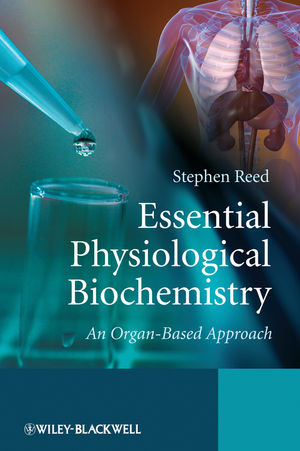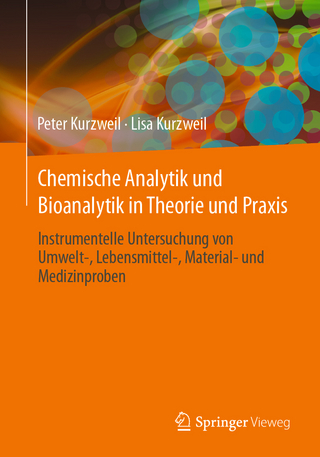
Essential Physiological Biochemistry
John Wiley & Sons Inc (Verlag)
978-0-470-02635-9 (ISBN)
- Titel z.Zt. nicht lieferbar
- Versandkostenfrei innerhalb Deutschlands
- Auch auf Rechnung
- Verfügbarkeit in der Filiale vor Ort prüfen
- Artikel merken
This text provides a fresh, accessible introduction to human metabolism that shows how the physiological actions of selected organs can be explained by their particular biochemical processes. Focusing on metabolic integration, rather than pathways, this book opens with three introductory chapters that explore the principles of metabolism and its control before moving onto ‘themed’ chapters that investigate liver, communication systems (endocrine and neurological), blood and vascular system, muscle and adipose tissue and renal biochemistry.
Targeted at non-biochemistry majors who need to get to grips with key biochemical concepts and ideas, this textbook is an essential guide for all undergraduate biomedical science, sports science, nutrition and other allied health students.
Key features:
A fresh, accessible primer that adopts a unique, organ-system based approach to human metabolism.
Assumes only a basic understanding of chemistry.
Chapters are arranged specifically to enable readers to grasp key concepts and to aid understanding.
Some chapters include ‘Case Notes, illustrating key aspects of metabolism in cells, tissues and organs.
Dr. Stephen Charles Reed, Department of Biomedical Sciences, University of Westminster, London, UK.
Preface. Acknowledgement.
1 Introduction to metabolism.
Overview of the Chapter.
1.1 Introduction.
1.2 Metabolic Pathways.
1.3 Organization of Pathways.
1.4 Enzymes and Enzyme-Mediated Reactions.
1.5 Bioenergetics: An Introduction to Biological Thermodynamics.
1.6 Enzyme-mediated Control of Metabolic Pathways.
1.7 Strategy for Learning the Details of a Pathway: ‘Active Learning’ is Essential.
Chapter Summary.
Problems and Challenges.
2 Dynamic and Quantitative Aspects of Metabolism: Bioenergetics and Enzyme Kinetics.
Overview of the Chapter.
2.1 Introduction.
2.2 Bioenergetics: The Application of Thermodynamic Principles to Biological Systems.
2.3 Enzyme Kinetics.
2.4 Energy Generating Metabolic Processes.
Chapter Summary.
3 Principles of Metabolic Control: Enzymes, Substrates, Inhibitors and Genes.
Overview of the Chapter.
3.1 Introduction.
3.2 General Principles.
3.3 Glycolysis and the K TCA Cycle as Models of Control of Metabolic Pathways.
Chapter Summary.
Problems and Challenges.
4 Biochemistry of Intercellular Communication; Metabolic Integration and Coordination.
Overview of the Chapter.
4.1 Key Pathways.
4.2 Introduction.
4.3 Physiological Aspects.
4.4 Signalling Molecules.
4.5 Synthesis of Hormones.
4.6 Target Tissue Response to Signals.
4.7 Receptor Tyrosine Kinases.
4.8 Diabetes Mellitus (Greek: Large Volumes of Sweet Fluid).
Chapter Summary.
Case Notes.
5 Biochemistry of the Blood and the Vascular System.
Overview of the Chapter.
Key Pathways.
5.1 Introduction.
5.2 The Blood Vascular System.
5.3 Circulating Blood Cells.
5.4 Coagulation and Complement: Two of the Body’s Defence Mechanisms.
5.5 Blood as a Transport Medium.
Chapter Summary.
Case Notes.
6 Biochemistry of the Liver.
Overview of the Chapter.
Key Pathways.
6.1 Introduction.
6.2 Physiology of the Liver.
6.3 Synthetic Functions.
6.4 Detoxification and Waste Disposal.
6.5 Maintenance of Blood Glucose Concentration.
Chapter Summary.
Case Notes.
7 Biochemistry of Muscle.
Overview of the Chapter.
Key Pathways.
7.1 Introduction.
7.2 Physiology of Muscles.
7.3 Fuel Metabolism within Muscles.
7.4 Maintenance of ATP Availability in Active Muscle.
7.5 Fatty Acid as a Fuel in Muscle.
7.6 Proteins and Amino Acids as Fuels.
7.7 Fuel Utilization by Muscle: Adaptation to Exercise and Training.
Chapter Summary.
Case Notes.
8 Biochemistry of the Kidneys.
Overview of the Chapter.
Key Pathways.
8.1 Introduction.
8.2 Renal Physiology.
8.3 Metabolic Pathways in the Kidneys.
Chapter Summary.
Case Notes.
9 Biochemistry of Connective Tissue: Bone and Adipose.
Overview of the Chapter.
Key Pathways.
9.1 Introduction.
9.2 Histology of Connective Tissue.
9.3 The ECM of Connective Tissue.
9.4 Bone.
9.5 Cartilage.
9.6 Adipose Tissue.
9.7 Adipose as an Endocrine Tissue.
Chapter Summary.
Case Notes.
Appendix.
Index.
| Verlagsort | New York |
|---|---|
| Sprache | englisch |
| Maße | 170 x 246 mm |
| Gewicht | 726 g |
| Themenwelt | Naturwissenschaften ► Biologie ► Biochemie |
| Naturwissenschaften ► Biologie ► Mikrobiologie / Immunologie | |
| ISBN-10 | 0-470-02635-9 / 0470026359 |
| ISBN-13 | 978-0-470-02635-9 / 9780470026359 |
| Zustand | Neuware |
| Haben Sie eine Frage zum Produkt? |
aus dem Bereich


